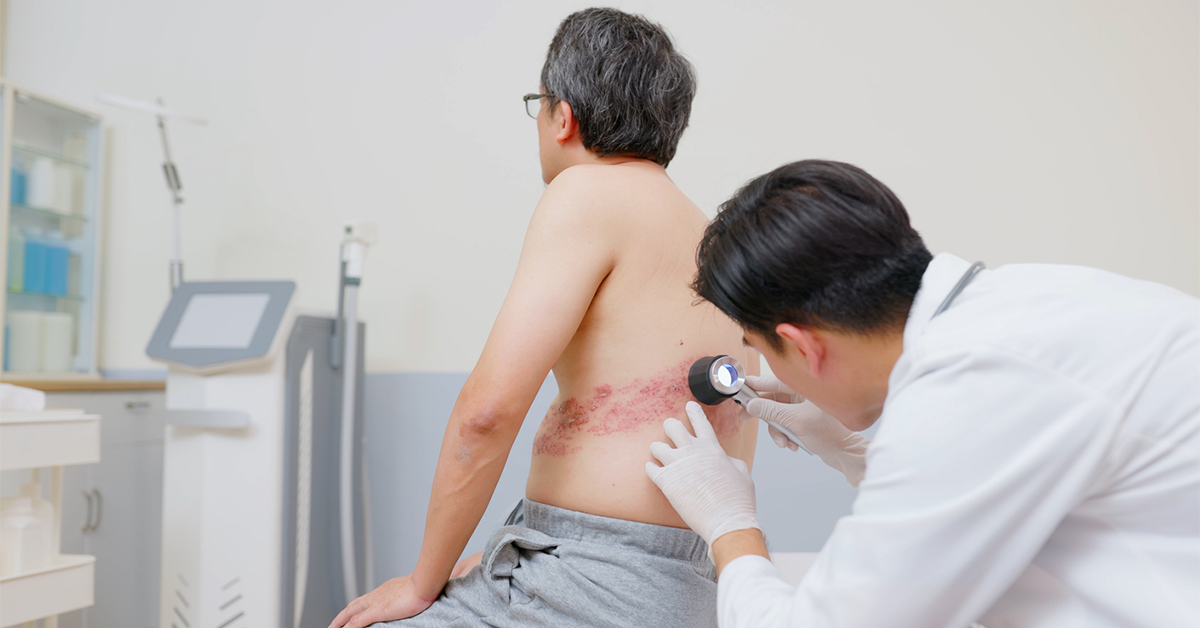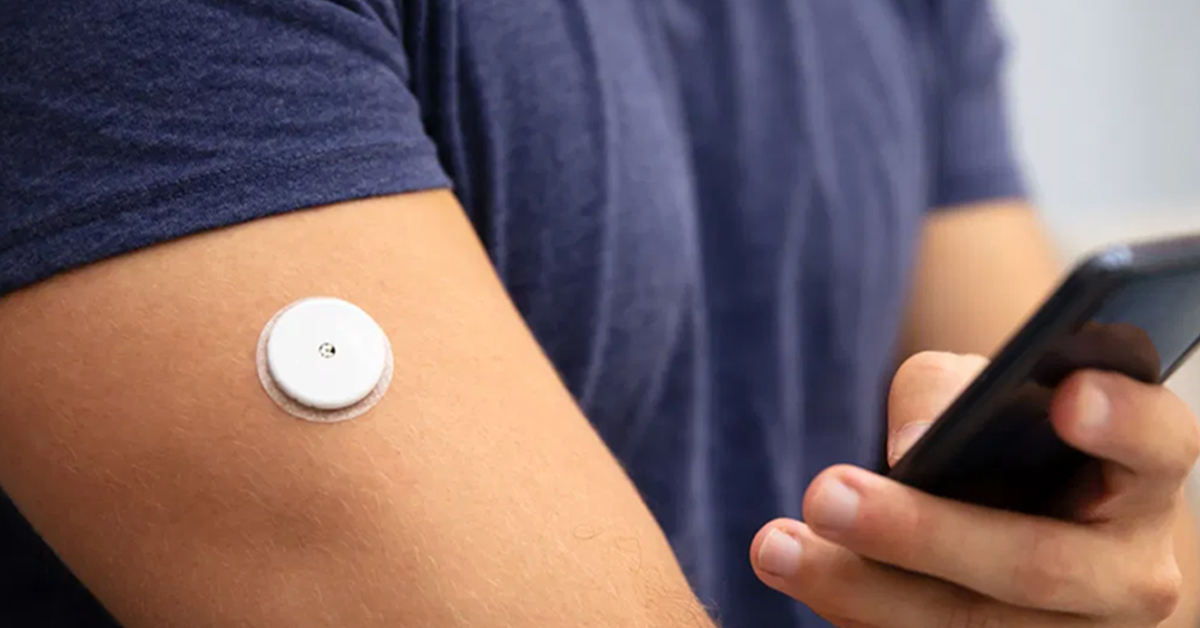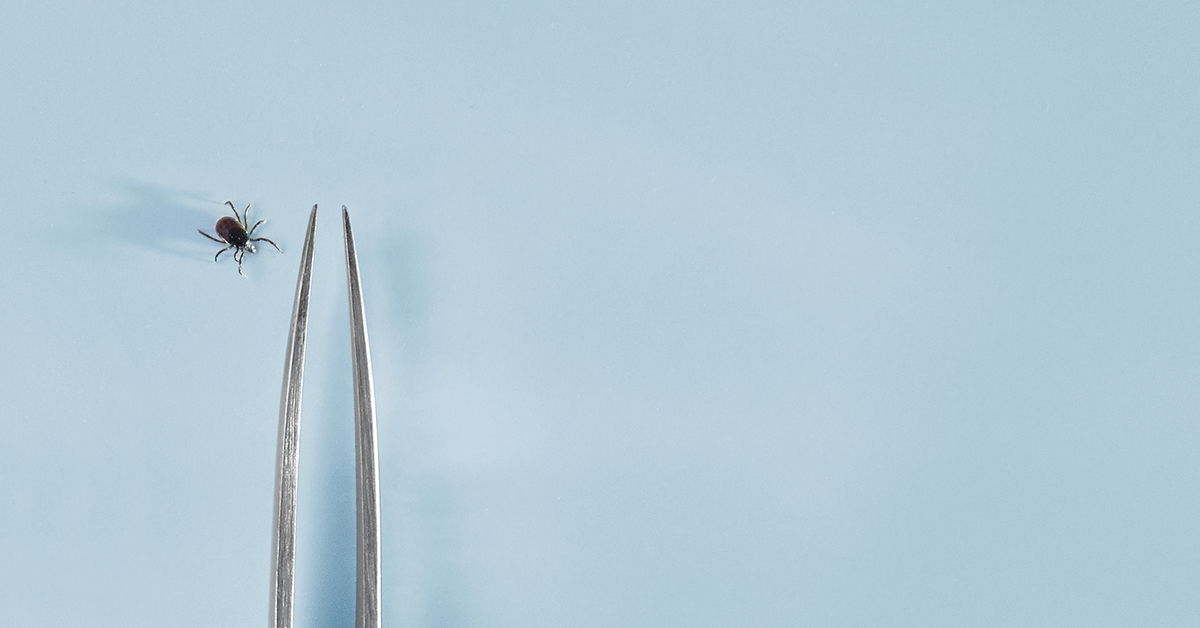Remember the burning, itchy discomfort of chickenpox from your childhood? The varicella-zoster virus, which causes chickenpox, doesn’t always disappear along with the red bumps. Unfortunately, the virus can remain dormant for decades, only to resurface later in life. The second time around, the virus reemerges as a different viral infection, a painful condition called shingles.
According to the Centers for Disease Control and Prevention (CDC), about one-third of Americans will develop shingles in their lifetime–that’s about 1 million people each year. Here’s what you need to know to avoid being among these numbers.
What is shingles?
Shingles, also known as herpes zoster, is a viral infection that affects the nerves and skin. It is characterized by a painful blistering rash that typically affects one side of the body. While often considered a nuisance, shingles can cause significant discomfort and has the potential for serious complications in some cases.
Risk factors for shingles
The reactivation of the varicella-zoster virus is the primary cause of shingles. Several factors can increase the risk of reactivation, including:
- Age: The risk of shingles significantly increases with age, with individuals over 50 years old being at a higher risk.
- Weakened immune system: Conditions or medications that weaken the immune system, such as HIV/AIDS, cancer, or long-term use of steroids, can increase the risk of shingles.
- Certain medical conditions: Medical conditions like diabetes or autoimmune diseases can also increase the risk.
- Stress: Severe emotional or physical stress can sometimes trigger shingles outbreaks.
Transmission of shingles
It’s important to note that while shingles itself cannot be spread, individuals with shingles can transmit the varicella-zoster virus to those who have never had it, potentially causing a chickenpox infection. Transmission occurs through direct contact with lesions or, in rare cases, through airborne transmission with localized infection. To minimize risk, it’s advisable to cover shingles lesions or blisters and avoid close contact with immunocompromised individuals.
Symptoms of shingles
Shingles symptoms typically appear in three stages.
1. Prodromal stage (1-5 days)
During what is often referred to as the “warning stage,” this initial phase doesn’t involve a visible rash but presents with clues that something might be brewing. You might experience:
- Tingling, burning, or numbness: This sensation typically appears on one side of the body and can be intense, often affecting a band-like area along the torso, face, or scalp.
- Fever, fatigue, and headache: These flu-like symptoms can accompany the localized discomfort, adding to the general feeling of being unwell.
2. Acute eruptive stage (7-10 days)
This phase marks the emergence of the telltale shingles rash. Following the initial discomfort, you’ll likely notice:
- Red, inflamed patches of skin: Typically appearing in a band-like pattern on one side of the body, these patches may resemble a sunburn.
- Development of blisters: Small, fluid-filled blisters erupt on the reddened patches, causing significant itching and discomfort.
3. Crusting and healing stage (2-4 weeks)
The final stage involves the body’s work to overcome the infection and heal the damaged skin. You’ll likely observe:
- Crusting over of blisters: The fluid-filled blisters dry up and form scabs or crusts.
- Gradual healing and resolution of the rash: Over time, the scabs and crusts fall off, revealing new, pink skin underneath. This process can take several weeks, and complete healing may leave temporary discoloration or scarring.
It’s important to note that the duration of each stage can vary from person to person. Additionally, some individuals may only experience mild symptoms, while others may face a more severe course with significant pain and complications.
Preventing shingles
The good news is that shingles can be prevented by vaccination. The Shingrix vaccine, a two-dose vaccine, is highly effective in reducing the risk of developing shingles and its complications. The CDC recommends Shingrix vaccination for all adults 50 years of age and older, even if they have already had shingles or are unsure if they had chickenpox.
Shingrix is a non-live, recombinant subunit vaccine. This means it doesn’t contain the live virus and cannot cause shingles. Instead, it exposes the immune system to specific proteins found in the varicella-zoster virus, prompting the body to develop an immune response. This immune response helps the body fight off the virus if it reactivates later, preventing shingles or reducing its severity.
Most pharmacies offer the shingles vaccine for free or low cost. Those on Medicare must get the vaccine through their Part D program.
Treatment for shingles
Early diagnosis and treatment of shingles are crucial to minimize discomfort and prevent long-term complications. Treatment typically involves:
- Antiviral medications: Medications like acyclovir or famciclovir can help shorten the duration of the shingles outbreak and reduce the severity of symptoms like pain and blistering.
- Pain management: Over-the-counter pain relievers, such as acetaminophen or ibuprofen, can help manage pain associated with shingles. Topical pain relievers may also be used in some cases.
- Antidepressants: In some cases, certain antidepressants can help manage the nerve pain associated with shingles, especially when other medications fail to provide relief.
Long-term effects of shingles
While shingles typically clears up within 2-4 weeks, some individuals may experience long-term complications, such as:
- Postherpetic neuralgia (PHN): This is the most common complication of shingles, characterized by persistent pain in the area affected by the shingles rash. PHN can last months or even years after the rash heals and can be a significant source of discomfort.
- Vision problems: Shingles affecting the face can involve the eye, potentially leading to vision loss if not promptly treated. The American Academy of Ophthalmology offers more details on how shingles can impact the eyes.
- Hearing problems: In rare cases, shingles can affect the nerves near the ear, leading to hearing loss or facial paralysis.
Shingles is a common yet preventable condition. Understanding the risk factors, getting vaccinated, and promptly seeking treatment when symptoms arise are vital for effectively managing shingles and reducing the chance of long-term complications.
Learn more
Concerned about shingles? Ask your provider about the Shingrex vaccine. If you suspect you have shingles symptoms, call Welia Health at 320.679.1313 to talk to your provider immediately.













